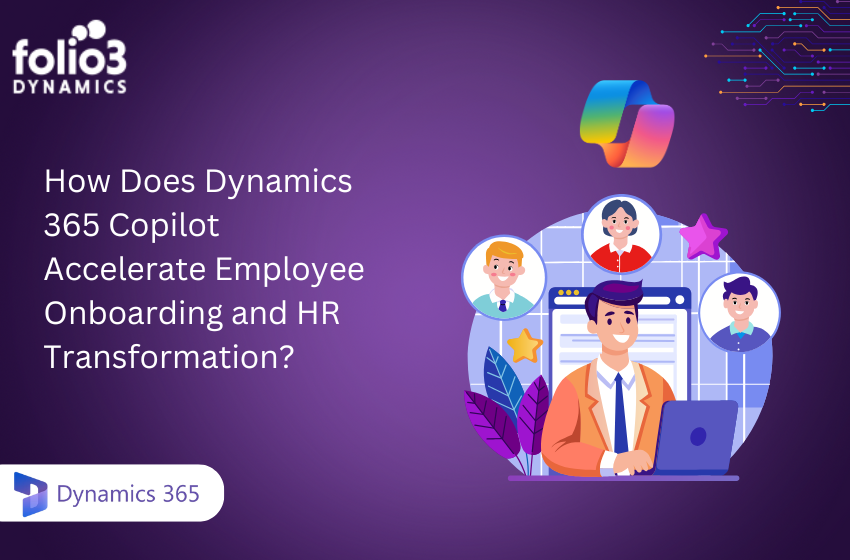Sales forecasting isn’t just about predicting numbers—it’s about making smarter, faster business decisions. Whether you’re running a lean sales team at a startup or managing multi-region operations in an enterprise, the ability to accurately forecast revenue can be the difference between consistent growth and missed opportunities.
According to a Gartner report, many organizations still struggle—only 45% of sales leaders say their forecasts are accurate. On the flip side, it predicts 65% of b2b sales organizations will transition from intuition-based to data-driven decision making by 2026.
These stats seem obvious, as inaccurate forecasts can lead to poor inventory planning, cash flow challenges, and ineffective resource allocation. This is where Microsoft Dynamics 365 for Sales stands out. By leveraging real-time CRM data, built-in AI capabilities, and seamless integration with Microsoft tools like Excel and Power BI, D365 Sales transforms sales forecasting from guesswork into a data-driven growth engine.
In this blog, we’ll walk you through the benefits of sales forecasting, explore the powerful forecasting features of D365 Sales, and guide you on how to implement smarter, more accurate forecasts, regardless of your company’s size or industry.
Why Sales Forecasting Matters
Before diving into tools, let’s answer the question: Why invest in sales forecasting at all?
Accurate forecasts help you answer big questions like how much inventory to buy, how many reps to hire, and whether to increase marketing spend. With reliable forecasts, companies can manage cash flow and avoid overcommitting resources. The Microsoft guidance notes that forecasting lets organizations predict future revenue and play a significant role in success.
Key reasons accurate forecasting matters:
- Strategic planning: Enables budgeting for staffing, inventory, and campaigns with confidence (no more guessing).
- Performance management: Helps managers coach reps and improve weak spots before quarter-end.
- Risk management: Let leadership anticipate cash flow or supply issues and avoid surprises.
- Competitive advantage: Firms with data-driven forecasting are more agile. For example, companies with precise forecasts are 10% more likely to grow revenue year-over-year and twice as likely to be top performers.
In practice, these advantages mean that sales forecasting solutions – especially those powered by analytics and AI – can transform your business. Dynamics 365 Sales forecasting, for example, upgrades traditional pipeline reports into an intelligent, visual forecasting solution. It uses live CRM data, team hierarchies, and AI-driven analysis so your forecast is continuously updated as deals close or slide. The result? Less guesswork and more time spent selling.
Benefits of Sales Forecasting
These forecasting benefits translate into real ROI. Research shows that companies with accurate, best-in-class forecasts hit their goals far more often. Likewise, businesses that upgrade from manual spreadsheets to intelligent forecasting can see sales growth of up to 50%. In other words, using modern forecasting software pays off: more on-target deals, smarter decision-making, and higher revenue growth.
Common benefits of Sales Forecasting include:
- Accurate revenue planning – Predict future sales and budget accordingly. Forecasts in Dynamics 365 can “accurately predict revenue for a given time period”.
- Performance tracking – Sellers and managers can compare actual sales vs targets/quotas and identify winners or lagging deals.
- Risk identification – Spot gaps in the pipeline early. For example, D365 forecasting helps “identify pipeline risks that might jeopardize targets”.
- Actionable insights – With forecasts in hand, leadership can reallocate budgets, adjust quotas, or even pivot strategy before quarter-end.
- Improved alignment – Sales, marketing, and finance teams align around the same numbers, reducing friction and guesswork.
Is Your Sales Forecast Helping You Make Smarter Business Decisions?
Leverage the power of Dynamics 365 to transform your sales predictions with real-time data, AI-driven insights, and seamless integrations.
Which System Supports Sales Forecasting?
Almost every modern CRM or ERP can provide some form of sales forecasting. In the Microsoft ecosystem, Dynamics 365 Sales is a top choice: it’s Microsoft’s dedicated CRM sales forecasting tool (part of the Microsoft forecasting software lineup).
Dynamics 365 also integrates with other systems like Business Central (ERP) or Power BI for even richer forecasting. Other popular systems include Salesforce CRM, Oracle, and SAP solutions, and industry-specific revenue forecasting software (including retail sales forecasting software like specialty merchandise planners).
For example, Dynamics 365 Sales lets you set up forecasts based on organization charts, products, or territories, and then visualizes them in dashboards and Kanban charts. This tight CRM integration means D365 automatically uses your existing opportunity and pipeline data – no manual data entry required.
In short, Dynamics 365 Sales is a full-featured CRM sales forecasting solution, but the concept of sales forecasting software applies broadly to many systems. The key is choosing a system that fits your data model and workflow. Microsoft’s tools stand out because they seamlessly tie CRM, ERP, and analytics together.
Key Features of Dynamics 365 Sales Forecasting
Dynamics 365 Sales (D365 Sales) provides a rich set of sales forecasting solutions out of the box. Here are some highlights:
- Real-time CRM integration: D365 forecasting lives under the Performance section of your Sales app. It uses data already in your CRM – opportunities, quotes, won deals, etc. – so forecasts are always based on actual sales figures.
- Flexible forecast types: You can forecast by revenue or quantity, and by organization, product, or territory. For example, one forecast might roll up by product line, while another shows your entire sales organization’s pipeline.
- AI-driven insights: The latest D365 Sales includes Copilot for Sales and predictive analytics. These AI tools analyze historical trends and external data, surfacing predictions (like deal close likelihood) and even recommending actions. This turns forecasting from guesswork into “data-driven actionable plans”.
- Visual dashboards: Forecasts are presented in intuitive charts and Kanban boards. Sales managers can see at a glance how much of the target is covered by best-case, pipeline, or uncommitted deals. (See Figure above for an example dashboard.)
- Collaboration and sharing: Forecast managers can build custom boards, share forecasts with teams, and set roll-up hierarchies. Your team can filter forecasts by sales rep, territory, or product, making it easy for each user to focus on what matters.
Technically, Dynamics 365 can handle up to 50 forecasts total (with 6 active at once), and supports both currency and quantity data types. You can even upload custom JavaScript to enforce rules (e.g., prevent saving if dates are wrong). Security roles let you decide who can view or edit each forecast. In short, D365 Sales is a sales forecasting software that’s flexible enough for complex organizations yet easy to set up for standard scenarios.
D365 Sales Forecasting Templates:
For a quick start, Dynamics 365 provides three forecasting templates. These streamline the setup by predefining which data to use.
|
Template |
Description |
|
Org Chart |
Projections based on each person’s reporting hierarchy and their opportunities. |
|
Product |
Forecasts by product line, using opportunity-product data for grouping. |
|
Territory |
Forecasts by sales regions/teams, using the Opportunity entity grouped by territory. |
Each template creates the necessary views and rollups, letting you skip manual setup steps. Once a template is chosen, D365 automatically rolls up the forecast for you and keeps it updated (forecasts refresh for 30 days after period end, capturing last-minute closings).
Integrating Forecasting with CRM and Analytics
Forecasting works best when it’s built directly into the systems your team already uses—and that’s exactly where Dynamics 365 Sales shines.
CRM as the Core of Sales Forecasting
At its foundation, Dynamics 365 Sales is a CRM system, which means its forecasting capabilities are deeply intertwined with your sales data. Forecasts in D365 are automatically populated using your CRM pipeline—qualified opportunities, active quotes, and closed deals. As sales reps update opportunity stages, amounts, or expected close dates, the forecasts adjust in real-time, eliminating manual updates and guesswork.
Real-Time, Automated Updates
This CRM sales forecasting model ensures that your sales forecast always reflects current activity. As deals move through the pipeline, the system updates your projections automatically, giving managers and leadership accurate, up-to-date insights without any additional data entry.
Seamless Integration with Microsoft Tools
What makes D365 forecasting even more powerful is its native integration with other Microsoft tools. Dynamics 365 Sales connects effortlessly with:
- Power BI: Combine forecast data with external sources like Excel-based sales budgets or real-time market analytics to create dynamic dashboards.
- Microsoft Office Suite: Export forecasts to Excel or share reports through Teams, making collaboration seamless.
- LinkedIn Sales Navigator: Bring in lead insights and engagement data to enrich your forecasting view and better predict deal closures.
These integrations ensure a 360-degree view of your sales pipeline, enabling more contextual and data-informed forecasting.
AI-Powered Forecasting with Microsoft Copilot
With Microsoft Copilot AI layered into Dynamics 365, forecasting becomes predictive rather than reactive. The AI analyzes historical trends, engagement patterns, and real-time sales data to provide insights such as: Likelihood of meeting quota, Recommended actions to improve win rates & Identification of high-risk opportunities. This removes the burden of manual number-crunching while helping sales managers and reps make smarter, faster decisions.
Sales Forecasting Solutions for Every Need
Dynamics 365 Sales is powerful, but it’s worth noting the landscape of sales forecasting solutions.
Varying Approaches Based on Business Size
Sales forecasting solutions vary widely based on business size and complexity. Larger enterprises often rely on advanced revenue planning suites that support detailed, multi-layered forecasts. In contrast, small and mid-sized businesses (SMBs) typically start with CRM-based forecasting due to ease of use and faster setup.
Forecasting Capabilities Within Popular CRMs
Many popular CRMs—like Salesforce, Zoho CRM, and SAP Sales Cloud—offer built-in forecasting modules. These tools enable teams to generate forecasts using real-time pipeline data. Dynamics 365 Sales offers similar capabilities, combining forecasting with deep CRM integration for seamless use.
Specialized Revenue Forecasting Software
Beyond standard CRMs, some businesses turn to specialized revenue forecasting software. These standalone tools integrate with multiple platforms and offer advanced analytics, predictive modeling, and industry-specific customization—ideal for organizations needing granular, data-rich insights.
Industry-Specific Tools for Retail Forecasting
For retailers, forecasting demand goes a step further. They often require tools that factor in seasonality, promotions, and inventory. Microsoft’s Dynamics 365 Business Central includes built-in demand forecasting for warehouse replenishment, and can be enhanced through Power BI or Azure AI for predictive planning.
Seamless Integration with Microsoft Ecosystem
Even when using third-party tools, D365 Sales fits in effortlessly. With robust integration across the Microsoft ecosystem, it serves as a flexible, scalable forecasting solution for both standalone and hybrid environments.
Getting Started with D365 Sales Forecasting
If you’re ready to try Dynamics 365 Sales forecasting, the setup is straightforward. An admin or forecast manager first defines the forecasting models (picking Org/Product/Territory and the goals). The system then builds the forecast grids. Reps and managers can immediately start viewing the forecast tab in their Sales Hub app. No code is needed for basic forecasts, though you can add custom scripts for advanced rules.
Once enabled, users should be trained on interpreting the forecasts. Useful tips include:
- Custom Dashboards: Tailor the main Sales Dashboard to include the “My Forecasts” chart or list for quick access.
- Alerts and Coaching: Set up alerts for when a sales rep’s forecast falls below target; this triggers timely coaching.
- Data Hygiene: Ensure opportunities are updated regularly. The forecast is only as accurate as your CRM data.
- Iterate on Forecasts: Use the drill-down feature in D365 to review which deals are contributing to the forecast. This helps refine your sales assumptions over time.
Microsoft also provides resources and best practices to guide the process. Apart from that, you can consult with Certified Microsoft Dynamics Partners to conduct the implementation without any hassle. With forecasts in place, you’ll get immediate value: more visibility into your pipeline and the ability to act on data-driven insights.
Need Advanced Forecasting Features for Next Level Predictions?
Go beyond basic CRM forecasting with specialized tools that offer granular insights, predictive models, and industry-specific functionality.
Conclusion: Empowering Sales with Forecasting
Dynamics 365 Sales forecasting brings together CRM data, AI analytics, and collaborative tools to make revenue planning smarter and easier. Instead of spreadsheet guesswork, your team gains interactive forecasts that update in real time and call out potential issues. The sales forecasting benefits – from clearer quotas and resource planning to increased win rates – mean your business can hit targets more reliably.
Whether you’re an SMB or an enterprise, moving to a modern forecasting platform (like Microsoft’s) can transform how you plan sales. With features such as AI predictions (Copilot), customizable templates, and seamless CRM integration, D365 Sales is a leading CRM sales forecasting tool. And because it’s part of the Microsoft ecosystem, it easily extends to retail and other use cases through Power BI or Business Central for comprehensive revenue forecasting.
Ready to take control of your sales pipeline? Embrace sales forecasting as a core strategy and equip your team with the right tools. Contact a Microsoft-certified partner or explore Dynamics 365 Sales to start creating accurate, actionable sales forecasts. Your next sales quarter will thank you.


